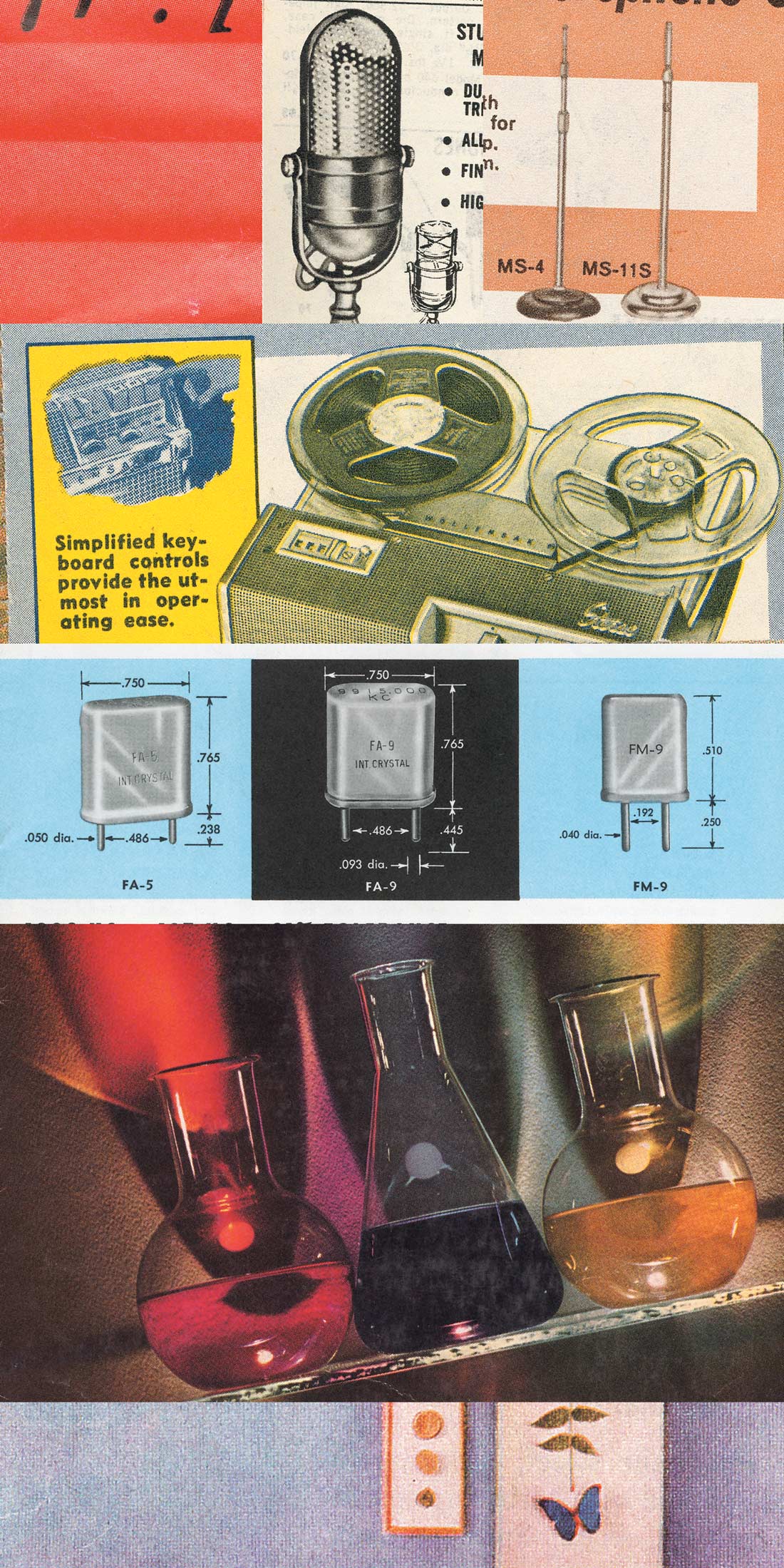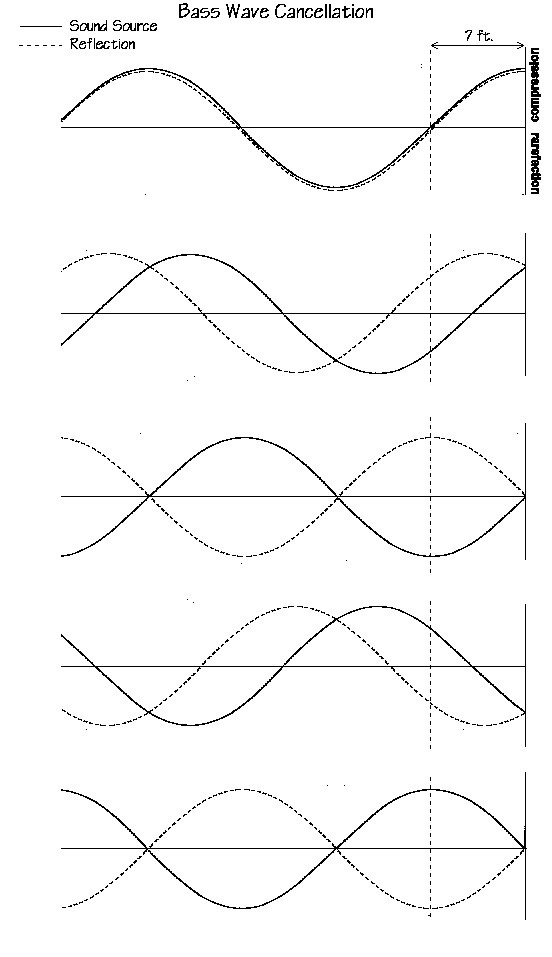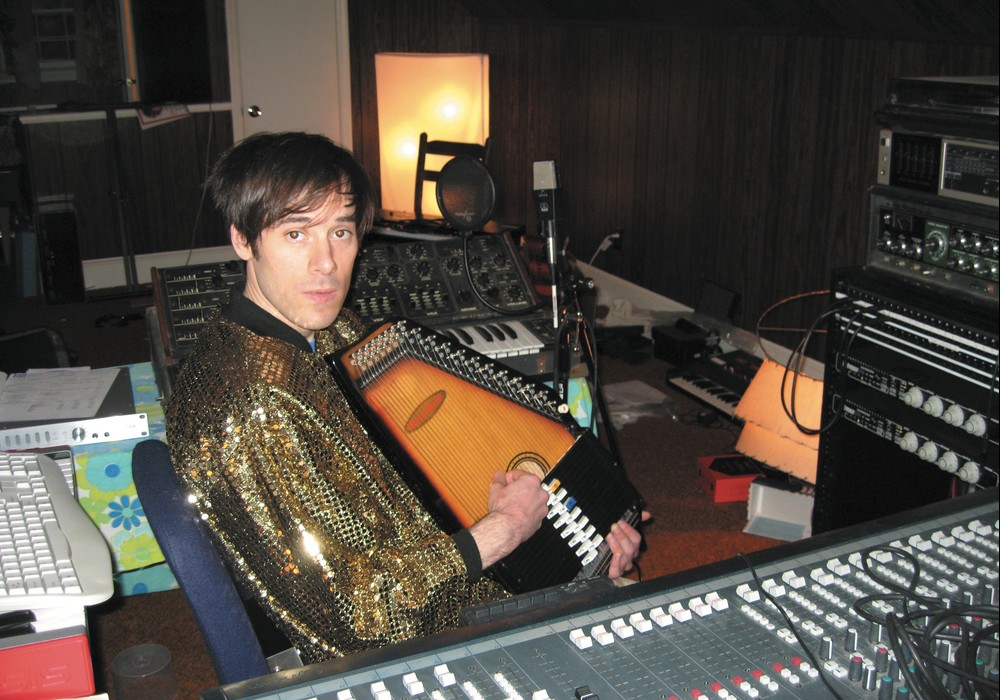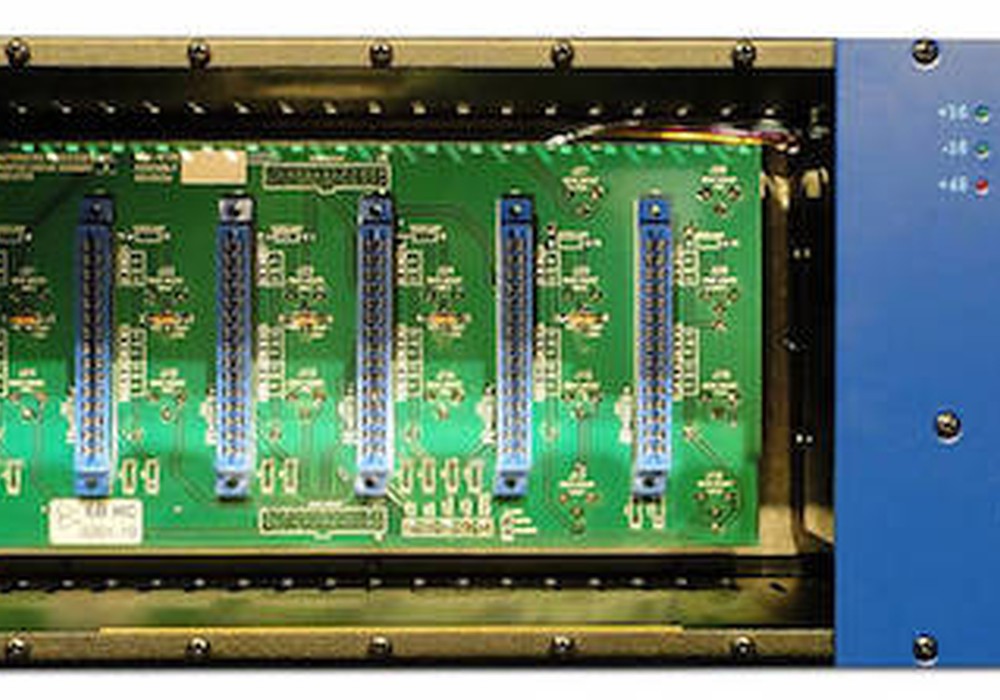One of the most difficult challenges a mixing engineer faces is figuring out how to balance the low frequencies, and often, the line between too much and too little bass seems very fine indeed. When it comes to building a control room, the problem is similar, and related: a room with reasonably flat bass response is difficult to design. You're probably familiar with the situation where the band, sitting back on the couch, is hearing plenty of bass while at the same time the engineer, sitting right at the console in the "sweet spot," isn't sure if he's hearing the big speakers or the Auratones. Or maybe just the opposite is true (sometimes the case in larger control rooms). Why this discrepancy in bass from one part of a room to another? The answer is: the room itself. Sound waves simply behave differently in a room than they do in a free field (i.e., outdoors). It is impossible for every bass frequency to be heard at the same volume at every point in a room. This is just a reality of the physics of sound, and understanding this is crucial to mixing bass properly and to building a good-sounding control room.
THE BOUNDARY EFFECT
One way of improving a room's bass response is to use certain room ratios (of height to width to depth), thus tuning the room's modal response. Although good ratios are very important, many instances of problematic bass are caused by the more general wave cancellation: When sound waves hit a wall, they reverse direction and recombine with the waves coming from the source. Room-boundary-related wave cancellation, or the boundary effect, affects all sound waves, at all frequencies-not just frequencies that are mathematically related to the room dimensions. This phenomenon of sound waves mixing with their own reflections causes pressure build-ups (loudness) and cancellations (softness) at predictable distances from the wall, given a specific frequency. With bass notes, the problems are especially noticeable, since the wavelengths are longer and you can't simply move your head a couple of inches to compensate for the problem (something you probably do unconsciously for higher frequencies). This wavelength issue is the cause of many bass headaches, and understanding the boundary effect can help you to create more solid bass when mixing, even when working in a room with less than ideal modal ratios.
Let's take a moment to examine what happens when a speaker vibrates at 40 Hz in a room. Forty times per second, the speaker cone thrusts forward, causing a compression "peak" to travel across the room at the speed of sound. In between each such forward peak, the speaker cone travels backward, creating rarefaction "valleys." The distance between one compression peak and the next is one cycle, hence 40 peaks in a second equals 40 cycles per second (or Hz). Since sound travels through the air at a speed of approximately 1130 ft. per second, and 40 waves are going past any given point in a second, each wave cycle will be 28 ft. apart (1130 divided by 40 equals approximately 28). The distance between a peak and a valley will be half that: 14 ft. In a free field with no boundaries, you could stand at any reasonable distance from the speaker and hear flat, even bass, because the alternating peaks and valleys just keep going right past you, no matter where you stand. In a room, on the other hand, a wave will hit a wall or other surface, reverse direction, and then this reflected wave will mix with the source wave coming from the speakers. Inside, as opposed to outside, speakers sound louder due to these reflections, as volume is not lost to "outer space." The downside is that in some places in the room, for a given note, compression meets compression, amplifying that frequency (constructive interference), and in other parts of the room, compression meets rarefaction, canceling at that frequency (destructive interference). Exactly where in the room this happens varies with which bass note is sounding, and this is what drives engineers nuts as they try to decide on the bass level, EQ, and compression. The volume of any given bass note is completely dependent upon where you are in the room; conversely, the amount of bass you perceive at any given point in the room is dependent upon what note is being played.
CATCH A WAVE
Let's continue with the example of a 40 Hz wave. In a medium-size control room, 19 ft. deep, a sound wave's compression peak will hit the back wall, reverse direction, and combine with the next rarefaction valley at one quarter of its wavelength, or seven ft. from the wall in the case of 40 Hz. (The rarefaction valley is one half of a wavelength, or 14 ft., behind the compression peak. Thus, after hitting the wall, the compression peak and the rarefaction valley, moving toward each other at equal speed, will meet at a quarter of the wavelength from the wall, or approximately seven ft.) Figure 1 shows five different phases of a 40 Hz wave, with the dotted line representing the reflection off the boundary (wall) to the right. The ear hears the wave by detecting variations in pressure from static pressure (represented by the horizontal line through the middle). At any given point in the room, the direct and reflected waves combine additively, with values above the horizontal line being positive, and those below the line being negative. Note that at the 7 ft. point, or 1/4 wavelength, the net result is zero, regardless of which phase is hitting the wall, so the ear hears no pressure variations at this location. (Note: for visual clarity, the reflected waves are shown to have the same amplitude as the source waves. In reality, the reflected waves are several dB down in amplitude, due to reflection-related energy loss, so the nulls are actually less than total.)
Invariably, for any frequency, there is always a cancellation at the one-quarter-wavelength point from any wall or other boundary. (The same is true at the three-quarter-wavelength point, while at the half- wavelength point, constructive interference occurs, causing the note to sound louder than it should.) So, someone sitting seven ft. from the rear wall is in the null point for 40 Hz. If the song is in the key of "E," this is a serious problem, since low "E" on the bass is approximately 41 Hz (See Figure 2). And for certain types of kick drum sounds, the lack of 40 Hz could truly cause one to confuse the mains with the smaller speakers. At the same time, someone sitting one ft. from the rear wall would be hearing something completely different, because they would be at the null point for around 280 Hz (a shorter wavelength), yet would be hearing a boost at 40 Hz.
The main point here is that, no matter where you are in a room, you will hear certain bass notes softer, and others louder, than what's really on tape. In other words, for bass, there really is no "sweet spot." You may be able to create such a place for the highs and mids, but the bass wavelengths are too long for a single "sweet spot."
Now let's look at the example of a large control room in which an attempt has been made to control bass inconsistencies by incorporating rear wall trapping techniques. A typical design might include five- or six-ft.-deep bass traps, filled with fiberglass and hidden behind a fabric barrier located behind the client couch. The problem with such bass traps is that they don't actually trap enough bass to address the cancellations caused by the boundary effect. After hitting the true wall behind the fiberglass, the bass waves simply turn back on themselves, only slightly attenuated, and cancel themselves at certain distances. Although the deep fiberglass may be helping to tame the low-frequency reverb time in the room generally, now the problem is that the couch is located approximately seven ft. from the true back wall, at the null point for 40 Hz, thus the listener can hear almost nothing at this frequency. And now they can't walk back to the wall to hear 40 Hz before it cancels, because the bass trap is in the way! Because the listener hears less bass in this position, the bass traps are thought to be working, when in fact all that has happened is that the listener has been moved to a null point for certain bass frequencies, making them sound softer.
WHAT YOU CAN DO
So, what's the solution? First, avoid locating deep bass traps just behind the couch position. They eat up valuable real estate, and they create the impression of missing bottom end for those in the back of the room. (There is a place for deep fiberglass in a control room; however, it works best overhead, where it allows the listener to hear the bass from as many places in the room as possible.) Helmholtz resonators are a possible solution on the rear wall, since they take up less space. The trick would be to design them for a broadband effect, since Helmholtz resonators are, by their very nature, specific to certain frequencies. (If you're trying to prevent boundary effect cancellations to hear more even bass, it only makes sense to absorb evenly at all bass frequencies.) If the 19-ft.-deep room has good modal dimensions and a moderate amount of bass trapping (a fiberglass cloud overhead and a maximum of 8-12 inches of fiberglass on the rear wall), the bass should sound pretty even at the back of the room; at least all bass frequencies will be boosted relatively evenly at a distance one ft. from the wall. With eight inches of fiberglass, the null frequency on the couch will now be around 250 Hz, which is actually not so bad, since people tend to be overly biased against 250 Hz anyway, especially when they're not at the console, where the highs are imaging really clearly. The back of the room is the easy part. However, you're still stuck with the dilemma of the engineer's position suffering from boosts and cancellations associated with the distances to several room boundaries.
Since there isn't the option of putting the engineer up against the front wall (the console is in the way, and there must be some distance between the speakers and the engineer), you should start by establishing the listening position based on the speaker-listener triangle. The engineer's position will end up being a good distance from several room boundaries, so that constructive and destructive interference due to the boundary effect is inevitable. You can somewhat counteract these negative effects by playing the boundaries against each other. Don't repeat the same distance twice; for example, if your ears are four ft. from the floor, try to have the ceiling be more than four feet away. (For semi-rectangular rooms where left/right symmetry is desired, this presents a conundrum, since you will be the same distance from both side walls.) It is possible to balance destructive interference from one boundary against constructive interference from another. Needless to say, the modal ratios need to be devised in conjunction with the engineer position. But those of you working in the real world-with less-than- ideal modal ratios-can still benefit from tweaking the engineer position. By carefully evaluating the negative effects of the various boundaries, it is possible to create an engineer's spot where the bass is fairly smooth. However, to call this a "sweet spot" would be going a bit far. Essentially, you need to make the engineer's minimal-reflection area as large as possible, to enable the engineer to move about and assess the bass without losing all perspective on the other frequencies.
It will also help you to be conscious of the key of the song you're mixing, and of how that key's recurring notes' wavelengths relate to your position in the room. That way you won't be fooled into adding lots of unnecessary compression or EQ to a bass track just because the song is in a key whose tonic is being cancelled due to where you're sitting in the room. (See Figure 2.)
Try this: Take a synthesizer, set it to a sine wave, then have someone play a chromatic scale through your control room monitors. Walk around the room, listening for what notes boom out or sound quiet, then use a tape measure to compare your results to those predicted by the chart. Keep in mind that the boundary effect is caused by multiple boundaries simultaneously, but if you stay along the middle axis of the room (away from the side walls), the back wall boundary effect will be the most severe, and easily discernable. If you take the time to perform this experiment, it will make a big difference in the way you think about mixing bass.
It is always difficult to evaluate these large, low bass waves as they flow through a room, adding and canceling themselves, but the same thing that makes them so problematic-their physical size-is also what gives them such impact and makes them so much fun to hear. And they can be tamed: As long as you keep in mind that they are bigger than you are- much bigger-you can outwit them if you try.
Happy wave-catching!






